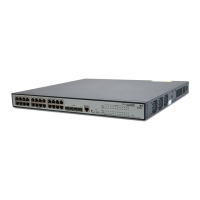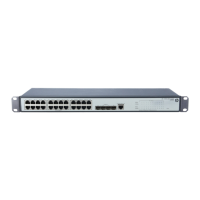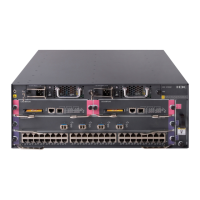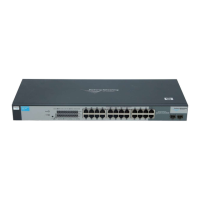94
RMON configuration
Remote Monitoring (RMON) is used for management devices to monitor and manage the managed
devices on the network by implementing such functions as statistics collection and alarm generation. The
statistics collection function enables a managed device to periodically or continuously track various
traffic information on the network segments connecting to its ports, such as total number of received
packets or total number of oversize packets received. The alarm function enables a managed device to
monitor the value of a specified MIB variable, log the event and send a trap to the management device
when the value reaches the threshold, such as the port rate reaches a certain value or the potion of
broadcast packets received in the total packets reaches a certain value.
Both the RMON protocol and the Simple Network Management Protocol (SNMP) are used for remote
network management:
RMON is implemented on the basis of the SNMP, and is an enhancement to SNMP. RMON sends
traps to the management device to notify the abnormality of the alarm variables by using the SNMP
trap packet sending mechanism. Although trap is also defined in SNMP, it is usually used to notify
the management device whether some functions on managed devices operate normally and the
change of physical status of interfaces. Traps in RMON and those in SNMP have different
monitored targets, triggering conditions, and report contents.
RMON provides an efficient means of monitoring subnets and allows SNMP to monitor remote
network devices in a more proactive, effective way. The RMON protocol defines that when an
alarm threshold is reached on a managed device, the managed device sends a trap to the
management device automatically, so the management device does not need to get the values of
MIB variables for multiple times and compare them, reducing the communication traffic between
the management device and the managed device. In this way, you can manage a large scale of
network easily and effectively.
Working mechanism
RMON allows multiple monitors (management devices). A monitor provides the following methods for
data gathering:
Using RMON probes. Management devices can obtain management information from RMON
probes directly and control network resources. In this approach, management devices can obtain
all RMON MIB information.
Embedding RMON agents in network devices such as routers, switches, and hubs to provide the
RMON probe function. Management devices exchange data with RMON agents by using basic
SNMP operations to gather network management information, which, due to system resources
limitation, only covers four groups of MIB information, alarm, event, history, and statistics, in most
cases.
The HP device adopts the second way and realizes the RMON agent function. With the RMON agent
function, the management device can obtain the traffic that flow among the managed devices on each
connected network segments; obtain information about error statistics and performance statistics for
network management.
